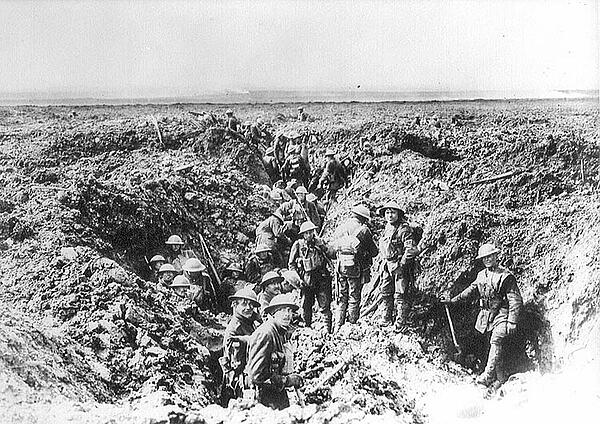Canada and World War One
Canada greeted the outbreak of World War One on 4 August 1914 with enthusiasm. 33,000 volunteers signed up and on 3 October the first contingent sailed for England. The Canadian Expeditionary Force (CEF) played an important part in the war effort. In particular, their success at Vimy Ridge and Passchendaele in 1917 helped to secure the final allied victory.
One of Canada’s legacies from World War One is its success at the Battle of Vimy Ridge. After three long years of trench warfare, the capture Vimy Ridge was part of an Allied offensive that sought to end the stalemate of trench fighting.
At the end of the Battle of the Somme, the Allied high command realised that a new approach was needed. The whole-front attack had led to thousands of casualties, so planning for an offensive had to be highly organised and as tight as possible.

On 9 April 1917 the Battle of Vimy Ridge began. The Canadians had prepared for the attack by using large-scale models of the Germans’ trench systems. The Allies planted explosives beneath enemy lines and set them to detonate when the time for attack came.
They also created elaborate tunnel systems with train tracks, piped water and bunkers. These underground tunnels housed some Canadian troops prior to battle. In letters posted home before the battle, some Canadians complained about the claustrophobic conditions underground.
New techniques and tactics were vital to the success of the battle. Lieutenant-Colonel Andrew MacNaughton developed new ways to detect German artillery guns. Using optical and acoustic techniques he was able to detect the position of the guns and then order an artillery barrage on that location. The success of this bombardment was such that the Germans called it “the Week of Suffering”.
The planning for the battle paid off. The first lot of Canadian troops were protected by a rolling barrage, and they were able to pass the first line of trenches. The next section of Canadian troops had to clear out the first trench system. Thanks to this method, the first wave were able to push past the panicked German trenches. The next wave arrived soon after, leaving the Germans helpless and overrun.
The Canadians captured ‘Hill 145’ in one day - it was the highest point of the ridge and heavily defended. Shortly after, they took ‘The Pimple’. The Germans quickly decided to withdraw, leading to a fast victory for the Canadians. However, the Canadians suffered heavy losses of 10,602 men, with 3,598 killed.
Of the 600,000 Canadians who fought in the war, 60,000 were killed and 170,000 wounded. Canada was rewarded for its contribution to the war with a significant amount of autonomy from the British.
See also: India and World War One
MLA Citation/Reference
"Canada and World War One". HistoryLearning.com. 2026. Web.
